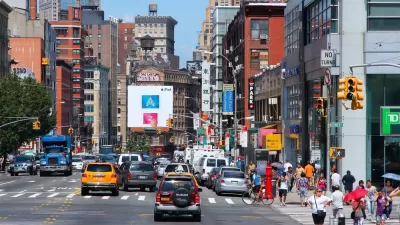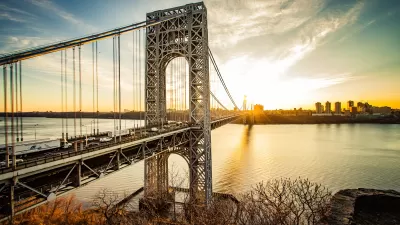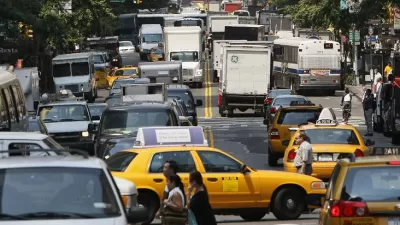Though fewer in number, taxis had no competition with subways, buses, and commuter rail all shut down in advance of the Monday night storm. Matt Flegenheimer continues his update on how Hurricane Sandy affected pubic transit and roads in New York.
If you could find a taxi, destinations were limited due to flooded roadways. Destinations in and out of Manhattan were severely restricted due to bridge and tunnel closures, though there was little need to go to the three area airports that had canceled most arriving and incoming flights.
"By midmorning (on Monday, Oct. 29), much of the Franklin D. Roosevelt Drive was underwater, shuttering 63 blocks' worth of northbound lanes. By the afternoon, the Holland and Brooklyn-Battery Tunnels were closed, too. And by nightfall, Hurricane Sandy had nearly isolated the island of Manhattan: the East River crossings like the Brooklyn and Manhattan Bridges, were closed at 7 p.m., as were the George Washington, Verrazano-Narrows, Whitestone and Throgs Neck Bridges, among others.
Even with the Lincoln and Queens-Midtown Tunnels remaining open Monday night, it was clearly the transportation system's most helpless day."
"There's no place for the water to go," said Judie Glave, a spokesman for the Metropolitan Transportation Authority, which operates the Brooklyn-Battery Tunnel. "We're pumping water into the river, and it's coming back."
"Joseph J. Lhota, the chairman of the transportation authority, warned at a news briefing on Monday that the expected storm surge posed a significant threat to subway switches and the electronic signaling system."
"The general ability to run the system and keep it safe is in jeopardy," Mr. Lhota said.
At The Wall Street Journal, Ted Mann takes a closer look at the damage salt water can inflict on the city's subway system, and the laborious process to get it up and running again. At a late morning news conference on Tuesday, Mayor Bloomberg estimated that the subway system will remain closed for "a good four or five days."
FULL STORY: Taxis, but Not as Many as Usual, Are Among Only Options

Maui's Vacation Rental Debate Turns Ugly
Verbal attacks, misinformation campaigns and fistfights plague a high-stakes debate to convert thousands of vacation rentals into long-term housing.

Planetizen Federal Action Tracker
A weekly monitor of how Trump’s orders and actions are impacting planners and planning in America.

San Francisco Suspends Traffic Calming Amidst Record Deaths
Citing “a challenging fiscal landscape,” the city will cease the program on the heels of 42 traffic deaths, including 24 pedestrians.

Defunct Pittsburgh Power Plant to Become Residential Tower
A decommissioned steam heat plant will be redeveloped into almost 100 affordable housing units.

Trump Prompts Restructuring of Transportation Research Board in “Unprecedented Overreach”
The TRB has eliminated more than half of its committees including those focused on climate, equity, and cities.

Amtrak Rolls Out New Orleans to Alabama “Mardi Gras” Train
The new service will operate morning and evening departures between Mobile and New Orleans.
Urban Design for Planners 1: Software Tools
This six-course series explores essential urban design concepts using open source software and equips planners with the tools they need to participate fully in the urban design process.
Planning for Universal Design
Learn the tools for implementing Universal Design in planning regulations.
Heyer Gruel & Associates PA
JM Goldson LLC
Custer County Colorado
City of Camden Redevelopment Agency
City of Astoria
Transportation Research & Education Center (TREC) at Portland State University
Jefferson Parish Government
Camden Redevelopment Agency
City of Claremont





























